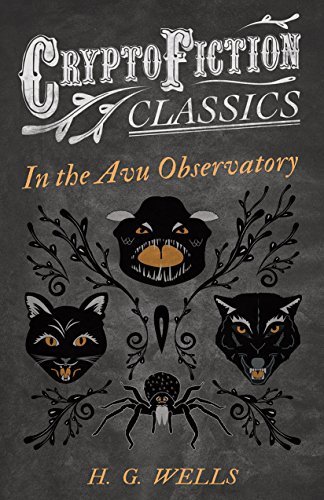 How soon unaccountable I became tired and sick,
How soon unaccountable I became tired and sick,
Till rising and gliding out I wander’d off by myself,
In the mystical moist night-air, and from time to time,
Look’d up in perfect silence at the stars.
—Walt Whitman, “When I heard the learn’d astronomer”
Please visit Michael Bukowski’s blog to see his artistic interpretation here.
Michael Bukowski and I have been creating these illustrated essays for long enough now that a distinct set of interrelated themes has emerged. Paramount among said themes is the recognition that a deeply entangled yet entirely center-less corpus of Weird Fiction began its accretion well over a century ago, and certainly long before anyone thought to tease out any sort of canon for it from the vast warp and weft of genre and mainstream fiction within which it remains woven, and from which it extends into cinema, comic books, and many other popular media. In form it is like unto Blake’s vegetative Polypus, one of Deleuze and Guattari’s rhizomes, or perhaps even a hyperobject à la Timothy Morton, too massively distributed in time and space for any single person to see all at once. The project of delineating the neglected parameters of this almost unviewable structure provides the raison de combattre for our struggle with the real, as well as with those critically restricted notions of a Weird Fiction canon that bottleneck somewhere during the Farnsworth Wright-era of Weird Tales.1
Attendant upon that understanding are other ideas, and though most of these date back to our original planning discussions, our research and discoveries here have enhanced, expanded, and refined all of them over the last several years to a far greater extent than either Michael or I anticipated when we began. Our current selection highlights the importance of several of these themes, in particular:
- 19th and 20th century science fiction is rich in Weird Fiction, and the two forms broadly coextend throughout their history and share common roots
- The true Weird monster exists outside of any human ontology or telos2
- Weird Fiction has had a central obsession with cryptozoology3 since long before either concept had a name
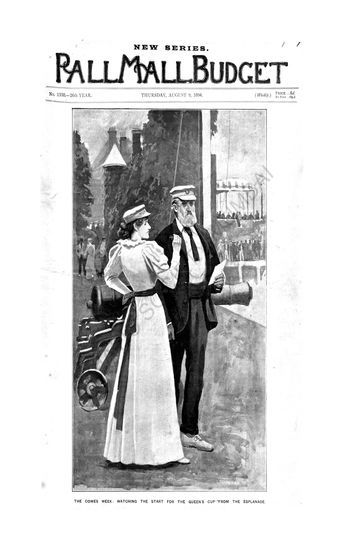 Thus far in Stories from the Borderland we have demonstrated the first point through explorations of High Weirdness in the works of such iconic science fiction authors as Arthur C. Clarke, William Gibson, James Tiptree Jr., and J.-H. Rosny aîné. The second theme is one we have explored in depth from our very first installment, wherein we showcased Joseph Payne Brennan’s signature tale of amoeboid horror, “Slime.”4 As for the cryptozoological fixation of Weird Fiction, though the featured creatures in many of our story selections certainly could be read as cryptids, our first explicit foray in this direction came last year, when we examined Lady Rosa Campbell Praed’s 1891 tale “The Bunyip,” about a legendary creature of great cultural significance in Australia. The date of Praed’s genuinely and organically Weird contribution makes clear the deep roots of our subject. Indeed, it predates our current selection, which first appeared in the Pall Mall Budget for August 9, 1894,5 by several years.
Thus far in Stories from the Borderland we have demonstrated the first point through explorations of High Weirdness in the works of such iconic science fiction authors as Arthur C. Clarke, William Gibson, James Tiptree Jr., and J.-H. Rosny aîné. The second theme is one we have explored in depth from our very first installment, wherein we showcased Joseph Payne Brennan’s signature tale of amoeboid horror, “Slime.”4 As for the cryptozoological fixation of Weird Fiction, though the featured creatures in many of our story selections certainly could be read as cryptids, our first explicit foray in this direction came last year, when we examined Lady Rosa Campbell Praed’s 1891 tale “The Bunyip,” about a legendary creature of great cultural significance in Australia. The date of Praed’s genuinely and organically Weird contribution makes clear the deep roots of our subject. Indeed, it predates our current selection, which first appeared in the Pall Mall Budget for August 9, 1894,5 by several years.
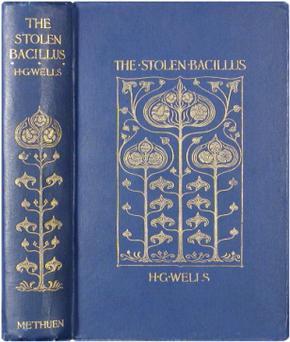 Thus we come to the story upon which we have trained our lens at present, “In the Avu Observatory,” and its author, one Herbert George Wells. Certainly only Mary Shelley and Jules Verne (and perhaps Poe) can be considered more foundational to science fiction as a genre—though only Wells lived long enough to see that label attain any currency. Although many of Wells’ most famous and influential novels contain elements of cosmic horror,7 the case can readily be made for a number of his short stories as Weird Tales. Moreover, proto-cryptozoology is a consistent motif in this portion of his oeuvre. Wells’ best-known “cryptid” tale, “Æpyornis Island,” appeared in The Stolen Bacillus and Other Incidents, the same collection as “In the Avu Observatory.”6 This volume also included an early entry in the less sensationalized “field” of cryptobotany, “The Flowering of the Strange Orchid.” The Pall Mall Budget originally published all three tales, and “Observatory” came out exactly one week after “Orchid.” The 1890s were clearly a productive period for Wells, and his most famous novels followed these tales in rapid succession, beginning with The Time Machine in 1895.
Thus we come to the story upon which we have trained our lens at present, “In the Avu Observatory,” and its author, one Herbert George Wells. Certainly only Mary Shelley and Jules Verne (and perhaps Poe) can be considered more foundational to science fiction as a genre—though only Wells lived long enough to see that label attain any currency. Although many of Wells’ most famous and influential novels contain elements of cosmic horror,7 the case can readily be made for a number of his short stories as Weird Tales. Moreover, proto-cryptozoology is a consistent motif in this portion of his oeuvre. Wells’ best-known “cryptid” tale, “Æpyornis Island,” appeared in The Stolen Bacillus and Other Incidents, the same collection as “In the Avu Observatory.”6 This volume also included an early entry in the less sensationalized “field” of cryptobotany, “The Flowering of the Strange Orchid.” The Pall Mall Budget originally published all three tales, and “Observatory” came out exactly one week after “Orchid.” The 1890s were clearly a productive period for Wells, and his most famous novels followed these tales in rapid succession, beginning with The Time Machine in 1895.
Having provided a framework for “In the Avu Observatory,” let us now consider the story itself. Its geographical setting is not so easy to pin down as its literary and historical locations. If ever “Avu” designated an actual place in Borneo, that usage appears to have fallen extinct. I found it only in a pair of German texts published in the early oughts of the last century, each of which, upon examination and preliminary translation, turned out to be referencing Wells’ story.8
 Thus Wells appears to have plucked the place-name “Avu” out of his ass. However, North Borneo, Sarawak, and Brunei had all become British protectorates by 1888, so the island likely occupied some column-inches in U.K. newspapers around the time Wells wrote the story, and perhaps this was also when it registered in his imagination. His decision to set this tale on that island represents another in a long line of such essentialized “Eastern” settings that Edward Said would recognize all too well.
Thus Wells appears to have plucked the place-name “Avu” out of his ass. However, North Borneo, Sarawak, and Brunei had all become British protectorates by 1888, so the island likely occupied some column-inches in U.K. newspapers around the time Wells wrote the story, and perhaps this was also when it registered in his imagination. His decision to set this tale on that island represents another in a long line of such essentialized “Eastern” settings that Edward Said would recognize all too well.
The tale does offer faint clues as to where Wells positioned Avu and its isolated, remote observatory. It “stands on the spur of the mountain. To the north rises the old crater…” The crater might be Mount Kinabalu (Gunung Kinabalu) in the north of the Crocker Range. I find no references to a domed observatory anywhere in the Crocker Range, so this probably represents Wells’ initial embellishment of reality in this particular tale.
The embedded description that begins in the first paragraph may be more important than the tale’s embroidered setting. In these first few sentences Wells establishes a dichotomy between the blue sky and the darkened Earth with its cover of jungle: “…the old crater, black at night against the unfathomable blue of the sky. From the little circular building…the slopes plunge steeply downward into the black mysteries of the tropical forest beneath.” This blue/black motif continues through much of the story, with black apparently signifying danger and the hidden unknown, and blue indicating safety and peace.
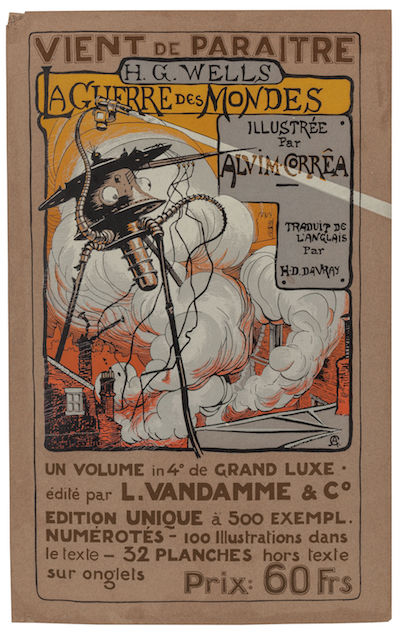 The opening paragraphs of this tale also contain intriguing hints of the beginning of The War of the Worlds,9 published only three years later, with astronomers observing mysterious fluctuations in brilliance of a distant red body, and the implication that unknown threats to humankind exist in the great darkness. In this earlier story however, the object flickering in the telescope is a red herring, and menace comes from a detached piece of the jungle’s blackness.
The opening paragraphs of this tale also contain intriguing hints of the beginning of The War of the Worlds,9 published only three years later, with astronomers observing mysterious fluctuations in brilliance of a distant red body, and the implication that unknown threats to humankind exist in the great darkness. In this earlier story however, the object flickering in the telescope is a red herring, and menace comes from a detached piece of the jungle’s blackness.
Wells plays an interesting game with the reader regarding the identity of the “Thing” that first appears as a “huge vague black shape” as it enters the observatory’s dome. He offers several fragments of description during Woodhouse’s struggle in the dark with the creature, in the manner of the famous parable from India about the blind men and the elephant. The reader is left to assemble the whole from partial images of a beast that has both “skin like oiled leather” and “grey-brown fur.” Its head, “as big as a mastiff’s” bears “sharply-pointed upstanding ears and a crest between them.” When Woodhouse grips one of the former, he finds it “velvety…like the ear of a big cat.” It also possesses sharp claws and “keen teeth.”
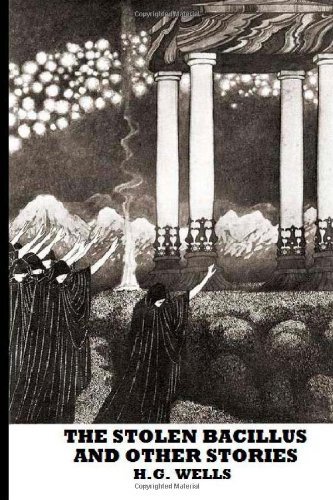 At the end of the story, Woodhouse’s boss, Thaddy, the “chief observer,” casually observes that the Dayaks “talk about a Big Colugo, a Klang-utang—whatever that may be. It does not often attack man, but I suppose you made it nervous. They say there is a Big Colugo and a Little Colugo, and a something else that sounds like gobble. They all fly about at night. For my own part, I know there are flying foxes and flying lemurs about here, but they are none of them very big beasts.” Note that even as he seems to be providing an explanation for what attacked his partner, Thaddy is actually doing the opposite, as he offers two or three possible identifications (depending on whether the “Big Colugo” and the “Klang-utang” are meant to be the same thing, which is not entirely clear from the text), one of which “sounds like gobble.” Woodhouse follows this with a Shakespeare quote already so clichéd in 1894 that Thaddy groans. Anyone who attempts to write critically about Weird Fiction should read this story to the end so that they will be shamed out of ever making that allusion again.
At the end of the story, Woodhouse’s boss, Thaddy, the “chief observer,” casually observes that the Dayaks “talk about a Big Colugo, a Klang-utang—whatever that may be. It does not often attack man, but I suppose you made it nervous. They say there is a Big Colugo and a Little Colugo, and a something else that sounds like gobble. They all fly about at night. For my own part, I know there are flying foxes and flying lemurs about here, but they are none of them very big beasts.” Note that even as he seems to be providing an explanation for what attacked his partner, Thaddy is actually doing the opposite, as he offers two or three possible identifications (depending on whether the “Big Colugo” and the “Klang-utang” are meant to be the same thing, which is not entirely clear from the text), one of which “sounds like gobble.” Woodhouse follows this with a Shakespeare quote already so clichéd in 1894 that Thaddy groans. Anyone who attempts to write critically about Weird Fiction should read this story to the end so that they will be shamed out of ever making that allusion again.
I encourage you to look up the Colugo online. Thaddy is correct that “they are none of them very big beasts”: neither of the two known species grows much longer than a foot. Certain extinct relatives grew slightly larger, but not by far. It is hard to imagine a Colugo as threatening in anything less than full daikaiju size; they are just so damned adorable. Also, they have these really weird and totally non-pointy teeth, which you should also google.
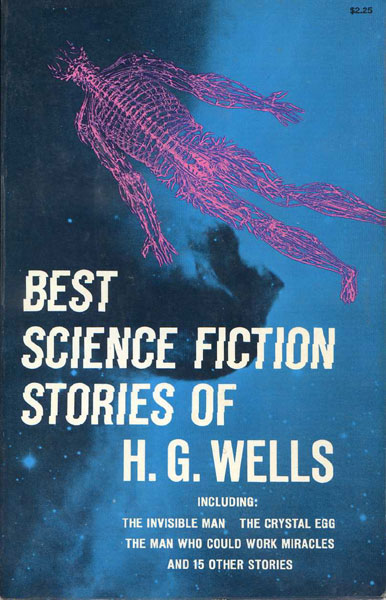 The “utang” of Klang-utang is fairly obvious: it is hutan (or utan), which means forest or jungle in Malay and Bahasa Indonesia, and should be familiar to our readers from Orangutan(g), which means “forest-person.” “Klang” is more obscure. The Klang River runs through the Klang Valley and the city of Kuala Lumpur, but this is on the Malaysian Peninsula, not Borneo. In German, Klang can mean “sound.” The name would work as a bilingual compound meaning “jungle-sound,” which would amplify the obvious foreshadowing in the second paragraph: “the cry of some strange animal was heard from the midst of the mystery of the forest.” The name also brings to mind the kongamato, a bat-like cryptid from the Congo, made famous by early cryptozoologist Ivan T. Sanderson, who claimed to have survived an attack by one (an incident we discussed in an earlier episode of Stories from the Borderland).
The “utang” of Klang-utang is fairly obvious: it is hutan (or utan), which means forest or jungle in Malay and Bahasa Indonesia, and should be familiar to our readers from Orangutan(g), which means “forest-person.” “Klang” is more obscure. The Klang River runs through the Klang Valley and the city of Kuala Lumpur, but this is on the Malaysian Peninsula, not Borneo. In German, Klang can mean “sound.” The name would work as a bilingual compound meaning “jungle-sound,” which would amplify the obvious foreshadowing in the second paragraph: “the cry of some strange animal was heard from the midst of the mystery of the forest.” The name also brings to mind the kongamato, a bat-like cryptid from the Congo, made famous by early cryptozoologist Ivan T. Sanderson, who claimed to have survived an attack by one (an incident we discussed in an earlier episode of Stories from the Borderland).
Another important point to note, at least from the perspective of literary history, is that Woodhouse does not repel the Big Colugo or forest-gobble or whatever-tf—it-is through any intellectual superiority or feat of engineering legerdemain, but via brute combat and the most primitive form of expedient tool use. Nor is either man able to account for it intellectually, other than in the simplest terms. This is not the prototype of Campbellian science fiction (everyone really needs to stop referring to that stuff as the “Golden Age” because it is not: most of Anglophone science fiction took a hard right after Wells), with its roots in Jules Verne and Odysseus’ defeat of the Cyclops Polyphemus.
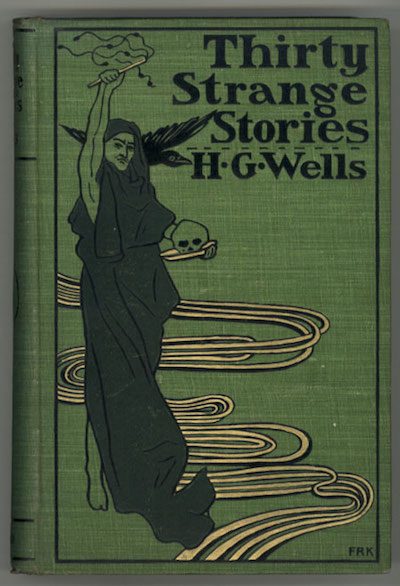 Also notably, the mission of these “learn’d astronomers” in the jungles of Borneo remains undefined in the story, and Wells seems to suggest that it is also misdirected, with the greater value to science represented in the biodiversity of the surrounding jungle, which the two Europeans ignore—until it reasserts itself violently. I am not arguing that Wells foresaw “cli-fi” (I use that term grudgingly, and yes, gagging is an appropriate response), at least not intentionally, but I believe it does demonstrate that the quality and depth of his ideas and his writing remain such that they continue to resonate today.
Also notably, the mission of these “learn’d astronomers” in the jungles of Borneo remains undefined in the story, and Wells seems to suggest that it is also misdirected, with the greater value to science represented in the biodiversity of the surrounding jungle, which the two Europeans ignore—until it reasserts itself violently. I am not arguing that Wells foresaw “cli-fi” (I use that term grudgingly, and yes, gagging is an appropriate response), at least not intentionally, but I believe it does demonstrate that the quality and depth of his ideas and his writing remain such that they continue to resonate today.
Woodhouse’s mostly silent struggle in the cramped observatory with a barely glimpsed foe makes up nearly half of the story. The first third or so comprises only set-up, atmosphere, misdirection, and wee bits of foreshadowing, while the ending is taken up almost entirely by Woodhouse and Thaddy’s semi-comical banter. By way of denouement, Wells offers only scenes of the bloody observatory and descriptions of fin de siècle first aid: “an egg in brandy” and a “copious dose of meat extract” (which would probably have been more appropriate than they sound today, given Woodhouse’s apparent blood loss).
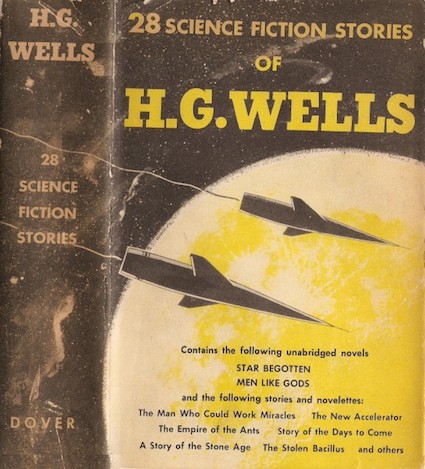 One might read this story as a critique of British colonialism if one is so inclined. Or at least one might attempt to read it in that way. Most of the elements are present, including several mentions of the astronomers’ “Malay and Dyak servants,” who live in huts beyond their own and closer to the jungle. In the second paragraph we hear “voices and laughter” from those huts, and shortly before Woodhouse’s encounter with the “Thing” in the observatory, “one of the men began a queer chanting song, in which the others joined at intervals.” Wells certainly seems to be laying the groundwork to suggest that the Indigenous inhabitants called down the Klang-utang as revenge for some mistreatment by Woodhouse and/or Thaddy. Genre readers have seen that formula many times. But Wells never makes any such connection, nor does the story offer any suggestion of hostility between the observers and their Dayak and Malaysian associates. To read any passive-aggressive obfuscation into Thaddy’s secondhand report of the identification they offered him for Woodhouse’s nocturnal assailant would also be a stretch.
One might read this story as a critique of British colonialism if one is so inclined. Or at least one might attempt to read it in that way. Most of the elements are present, including several mentions of the astronomers’ “Malay and Dyak servants,” who live in huts beyond their own and closer to the jungle. In the second paragraph we hear “voices and laughter” from those huts, and shortly before Woodhouse’s encounter with the “Thing” in the observatory, “one of the men began a queer chanting song, in which the others joined at intervals.” Wells certainly seems to be laying the groundwork to suggest that the Indigenous inhabitants called down the Klang-utang as revenge for some mistreatment by Woodhouse and/or Thaddy. Genre readers have seen that formula many times. But Wells never makes any such connection, nor does the story offer any suggestion of hostility between the observers and their Dayak and Malaysian associates. To read any passive-aggressive obfuscation into Thaddy’s secondhand report of the identification they offered him for Woodhouse’s nocturnal assailant would also be a stretch.
This little story actually has quite a lot going on in it. At first Wells seems to be building toward a narrative of Native vengeance against colonial overlords and/or some terror from the stars. Perhaps this is deliberate misdirection, in order to make the sudden arrival of Borneo’s answer to the Jersey Devil that much more of a surprise. If so, it works. Nonetheless, The Victorian era reader must have still expected Wells to provide some explanation for the creature, some reason behind its attack. Reason is exactly what the Victorian era reader expected.
If H.G. Wells intended all the parts of this story to add up to anything beyond a lot of blood, an overturned chair, and some broken glass, that greater meaning seems to have escaped nearly a century and a half of readers before me. Any real plot to this tale remains inchoate, or so overly subtle that it continues to elude discovery.
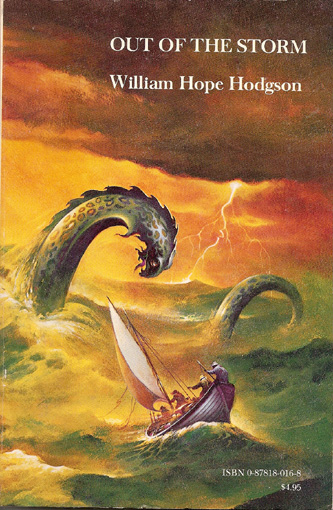 Stories with similar structures are actually common during the late Victorian Era and beyond, however. Set-up, monster arrives, violence ensues, exit monster.10 An excellent example is William Hope Hodgson’s 1905 tale “A Tropical Horror,” a favorite of both Michael’s and mine. Although too obvious a choice for Stories from the Borderland, Michael has already illustrated it and I have already written about it elsewhere, though we did so separately. Despite that tale’s particular high body count, it ends the same way: with the injured monster escaping and defying identification. Another example is “The Terror of Blue John Gap” by Arthur Conan Doyle, published in The Strand in 1910. Belgian author Jean Ray employed this model multiple times in his early work, including such tales as “La Bête blanche”/”The White Beast” (1921), “Dans les marais du Fenn”/“In the Fenn Marshes” (1923), and “La Présence horrifiante”/“The Horrifying Presence” (1931).
Stories with similar structures are actually common during the late Victorian Era and beyond, however. Set-up, monster arrives, violence ensues, exit monster.10 An excellent example is William Hope Hodgson’s 1905 tale “A Tropical Horror,” a favorite of both Michael’s and mine. Although too obvious a choice for Stories from the Borderland, Michael has already illustrated it and I have already written about it elsewhere, though we did so separately. Despite that tale’s particular high body count, it ends the same way: with the injured monster escaping and defying identification. Another example is “The Terror of Blue John Gap” by Arthur Conan Doyle, published in The Strand in 1910. Belgian author Jean Ray employed this model multiple times in his early work, including such tales as “La Bête blanche”/”The White Beast” (1921), “Dans les marais du Fenn”/“In the Fenn Marshes” (1923), and “La Présence horrifiante”/“The Horrifying Presence” (1931).
I would like to propose a subcategory of the Weird Tale that exists at the intersection of the three themes I discussed at the start of this essay, and I will provisionally identify it as the “creature encounter” tale. Creature encounter stories meet the following criteria:
- Framed as speculative fiction, including conventional horror;
- Employ a primary world setting;
- Focus on an encounter with a creature of unknown origin, whether supernatural, extraterrestrial, or simply unnatural, e.g. not identifiable as a known living species;
- Possess little or no plot other than the protagonist’s efforts to survive and/or overcome the creature;
- Leave the nature of the creature unexplained, regardless of whether the protagonist (or protagonists) defeats the creature, escapes it, or simply survives the encounter.
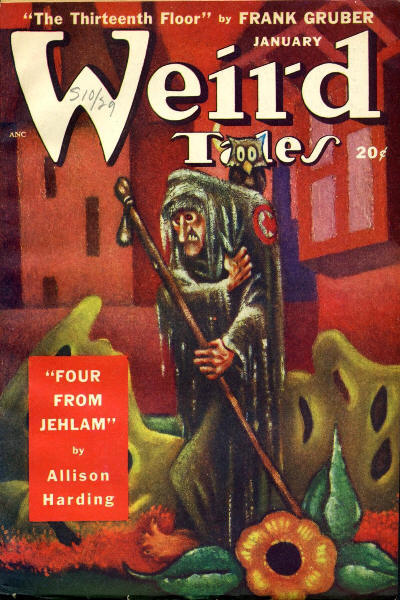 Although successful stories of this type retain the standard arc of rising and falling action, they strip plot to a bare minimum and consist of little more than atmosphere and conflict (person vs. the unnatural). Interestingly, other than its impact on the length of the story, the degree of character development does not affect these other criteria, and remains neutral for our purposes, though obviously it can affect the quality of the story. The skilled author can accomplish quite a bit with quick strokes, but often the protagonist remains a virtual cypher, as Woodhouse does in this story. The creature itself is often reduced to a terrifying mcguffin.
Although successful stories of this type retain the standard arc of rising and falling action, they strip plot to a bare minimum and consist of little more than atmosphere and conflict (person vs. the unnatural). Interestingly, other than its impact on the length of the story, the degree of character development does not affect these other criteria, and remains neutral for our purposes, though obviously it can affect the quality of the story. The skilled author can accomplish quite a bit with quick strokes, but often the protagonist remains a virtual cypher, as Woodhouse does in this story. The creature itself is often reduced to a terrifying mcguffin.
Greater and lesser examples of the “creature encounter” abound, especially in the pulps. A few years ago I ran across one of the lesser while researching Allison V. Harding, and this story offers a memorable case study because of its author. In addition to Harding’s “Four from Jehlam,” the January 1949 issue of Weird Tales contains the only appearance in that publication by author John D. MacDonald, an offering by the intriguing title “The Great Stone Death.” I read this story in the hopes that it might prove good material for Stories from the Borderland, but ultimately gave it a pass because other than a New Mexico setting (at the time I read the story, the state was still my home) and some okay description and action scenes that never meet the quality one might expect from MacDonald’s distinctive later work, such as the Travis McGee novels, the story didn’t really do much. Most importantly, I didn’t find the monster compelling enough to recommend the story to Michael.
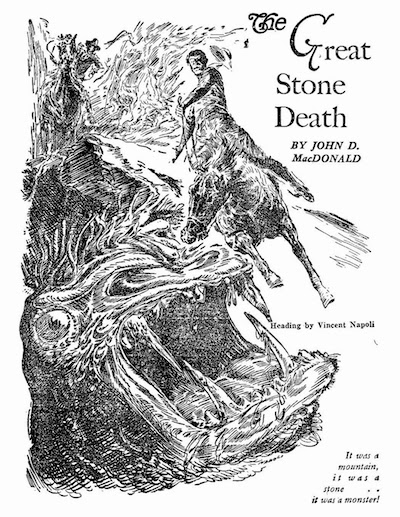 Perhaps my expectations for MacDonald’s tale were too high.11 I return to it now, however, not only as another example of the type of story whose parameters I am attempting to define, but as a story that can help reveal those parameters. I believe that these creature encounter stories work best precisely when they are the weirdest, when the balance of the various aspects I outlined above is at its best, and above all, when the ultimate “unexplainedness” of the monster best fits the overall trajectory of the story, regardless of how well written it is otherwise. The degree to which the author operates within Keats’ negative capability and compels the reader to “accept the mystery,”12 Where Wells, Hodgson, Conan Doyle, and Ray do this rather effortlessly, MacDonald’s story simply turns to stone…
Perhaps my expectations for MacDonald’s tale were too high.11 I return to it now, however, not only as another example of the type of story whose parameters I am attempting to define, but as a story that can help reveal those parameters. I believe that these creature encounter stories work best precisely when they are the weirdest, when the balance of the various aspects I outlined above is at its best, and above all, when the ultimate “unexplainedness” of the monster best fits the overall trajectory of the story, regardless of how well written it is otherwise. The degree to which the author operates within Keats’ negative capability and compels the reader to “accept the mystery,”12 Where Wells, Hodgson, Conan Doyle, and Ray do this rather effortlessly, MacDonald’s story simply turns to stone…
With this entry we conclude the Fourth Series (and twenty-first episode) of Stories from the Borderland. I confess I never expected this project to continue so long. I doubt Michael Bukowski did either, but it is his unflagging enthusiasm that continues to drive us both. Before you go, check out his depiction of the Klang-utang (or the thing that sounds like gobble) here. Fret not though, readers and lovers of great Weird Art and Fiction, we do plan to continue, and Michael has already drawn at least two of our monsters in our on-deck circle. In the meantime, we encourage you to comment or write with your own suggestions for future installments. You know where to find us.
Footnotes
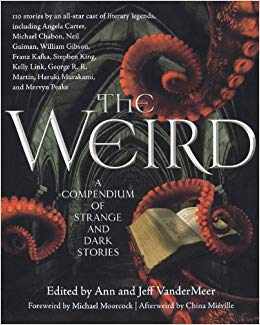 1The first, and to date, best major effort to establish an honest and open canon of The Weird is of course, Ann and Jeff VanderMeers’ The Weird: A Compendium of Strange and Dark Stories, which remains laudable and legitimate in both concept and execution. Our efforts in Stories from the Borderland operate as supplements to and in dialogue with that anthology, following the precedent set by the editors themselves, who acknowledged texts by authors including Philip K. Dick, J.G. Ballard, Gabriel Garcia Marquez, and Otsuichi—stories to which they were unable to obtain reprint rights—as absent but intended parts of the published volume. Notably also the VanderMeers only covered the hundred-year period between 1908-2008 in their antho, whereas and Michael and I see Weird Fiction emerging recognizably and discrete at least as early as the latter half of the 19th century and probably as far back as Hoffmann and Poe.
1The first, and to date, best major effort to establish an honest and open canon of The Weird is of course, Ann and Jeff VanderMeers’ The Weird: A Compendium of Strange and Dark Stories, which remains laudable and legitimate in both concept and execution. Our efforts in Stories from the Borderland operate as supplements to and in dialogue with that anthology, following the precedent set by the editors themselves, who acknowledged texts by authors including Philip K. Dick, J.G. Ballard, Gabriel Garcia Marquez, and Otsuichi—stories to which they were unable to obtain reprint rights—as absent but intended parts of the published volume. Notably also the VanderMeers only covered the hundred-year period between 1908-2008 in their antho, whereas and Michael and I see Weird Fiction emerging recognizably and discrete at least as early as the latter half of the 19th century and probably as far back as Hoffmann and Poe.
2Consider all the fictional monsters from the Fourth Dimension, and/or non-Euclidean space-time creatures, that are not of our universe but which can move through it (cf. Ambrose Bierce’s Damned Thing, Lovecraft’s Colour Out of Space, and the quintessential example, the antagonist of Nelson Bond’s 1939 story “The Monster from Nowhere”).
3Though the search for anthropophagous trees and shrubs may never occupy the cultural bandwidth of the sasquatch, Nessie, or even Ogopogo, I will always have a soft spot for cryptobotanical fiction. If you have not already, please check out our previous romp in this playground, featuring Mildred Johnson’s “The Cactus.”
4Interestingly, although Brennan’s monster is explicitly monadic within the frame of his narrative, it is neither the first nor the last prominent blob in Weird Fiction—in fact, it is part of a long literary lineage of oversized amoeboid terrors, and neither it, nor The Blob, nor Lovecraft’s shoggoths mark the beginning or end of that chain.
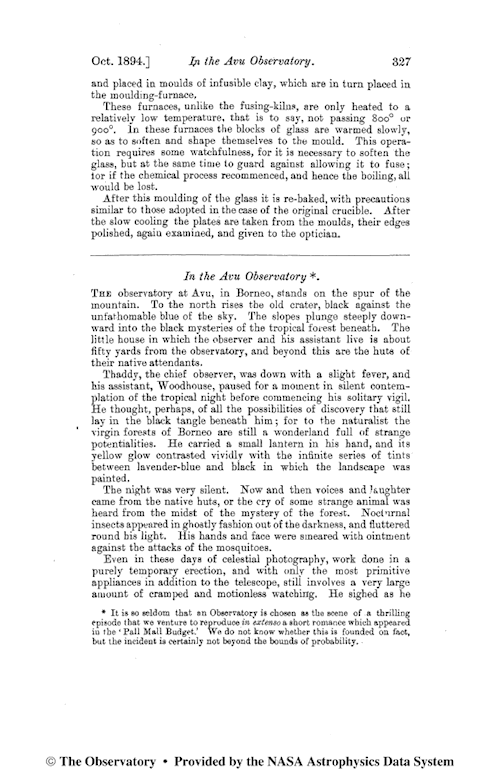 5An astronomy journal, The Observatory, reprinted the story in October of the same year, so enthralled were they by the idea of an adventure set in their titular structure. The single accompanying footnote reads: “It is so seldom that an Observatory is chosen as the scene of a thrilling episode that we venture to reproduce in extenso a short romance which appeared in ‘The Pall Mall Budget.’ We do not know whether this is founded on fact, but the incident is certainly not beyond the bounds of probability.” I find this note interesting, as it suggests the degree to which the story’s scenario was plausible to actual scientists of the time. Also, for the record, at least two other authors whom we have previously featured here penned their own creepy observatory stories: “L’Observatoire abandonné” (1921) by Jean Ray, and Allison V Harding’s “Scope” (1951). Ray’s conte is an example of “Weird Menace” rather than the true Weird Tale, while Harding’s story is a genuine example of cosmic horror, though its denouement has not aged well, alas. Enough stories probably exist for a weird observatory anthology, but of these three, I can only recommend the Wells unequivocally.
5An astronomy journal, The Observatory, reprinted the story in October of the same year, so enthralled were they by the idea of an adventure set in their titular structure. The single accompanying footnote reads: “It is so seldom that an Observatory is chosen as the scene of a thrilling episode that we venture to reproduce in extenso a short romance which appeared in ‘The Pall Mall Budget.’ We do not know whether this is founded on fact, but the incident is certainly not beyond the bounds of probability.” I find this note interesting, as it suggests the degree to which the story’s scenario was plausible to actual scientists of the time. Also, for the record, at least two other authors whom we have previously featured here penned their own creepy observatory stories: “L’Observatoire abandonné” (1921) by Jean Ray, and Allison V Harding’s “Scope” (1951). Ray’s conte is an example of “Weird Menace” rather than the true Weird Tale, while Harding’s story is a genuine example of cosmic horror, though its denouement has not aged well, alas. Enough stories probably exist for a weird observatory anthology, but of these three, I can only recommend the Wells unequivocally.
6The dying Earth in The Time Machine, the ancient tentacled race of Martians in The War of the Worlds, the twisted Selenites and the dreadful fate of Mr. Cavor in The First Men in the Moon are among the more obvious examples.
7Wells’ other notable cryptid tales include “The Sea Raiders” and “In the Abyss,” both from 1896. The influence on Lovecraft of these particular two stories is obvious.
8Das Weltall (The Universe), and Astronomischer Jahresbericht (Annual Astronomical Report), both from 1903, the latter referencing the former.
 9If I may be permitted a digression that is perhaps not so tangential as it might seem at first, In The War of the Worlds, Wells cites California’s Lick Observatory as the first to observe the ballistic launch of the Martian invasion force. The Lick Observatory opened in 1888, and is located on Mt. Hamilton in the Diablo Range, east of San Jose, not so very far at all from my home. I often take that route to visit my daughter in Palo Alto. Here is the fun part: access to the observatory is via the scenic and winding 130, which also runs through Del Puerto Canyon. In that latter desolate locale, approximately ten years ago, a man known to the Internet only by the alias “James Richards” claims to have encountered an interdimensional traveler by the name of Jonas (of course). Jonas, who apparently stopped in our shitty timeline only to take a leak, came from a world that differed from ours in three key ways: 1. Interdimensional travel machines are as common there as bicycles here; 2. The Beatles never broke up (at least they hadn’t as of 2008 or so), and thus Jonas gave our hero a homemade cassette of one of their later albums called Everyday Chemistry; and 3. THEIR KETCHUP IS PURPLE. Purple ketchup motherfuckers!!! Eat your heart out H.G. Wells, you never thought of that! And FYI, French fries are pommes frites: saving you some time when you come to L.A. to catch Jack the Ripper. Too tangential? I won’t even mention Klaatu…
9If I may be permitted a digression that is perhaps not so tangential as it might seem at first, In The War of the Worlds, Wells cites California’s Lick Observatory as the first to observe the ballistic launch of the Martian invasion force. The Lick Observatory opened in 1888, and is located on Mt. Hamilton in the Diablo Range, east of San Jose, not so very far at all from my home. I often take that route to visit my daughter in Palo Alto. Here is the fun part: access to the observatory is via the scenic and winding 130, which also runs through Del Puerto Canyon. In that latter desolate locale, approximately ten years ago, a man known to the Internet only by the alias “James Richards” claims to have encountered an interdimensional traveler by the name of Jonas (of course). Jonas, who apparently stopped in our shitty timeline only to take a leak, came from a world that differed from ours in three key ways: 1. Interdimensional travel machines are as common there as bicycles here; 2. The Beatles never broke up (at least they hadn’t as of 2008 or so), and thus Jonas gave our hero a homemade cassette of one of their later albums called Everyday Chemistry; and 3. THEIR KETCHUP IS PURPLE. Purple ketchup motherfuckers!!! Eat your heart out H.G. Wells, you never thought of that! And FYI, French fries are pommes frites: saving you some time when you come to L.A. to catch Jack the Ripper. Too tangential? I won’t even mention Klaatu…
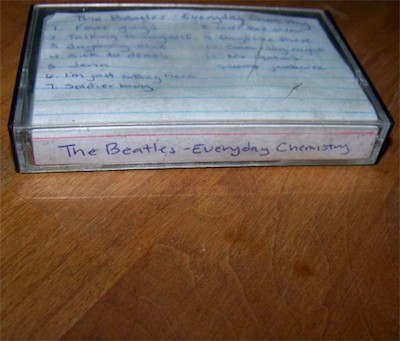 10In cases where the protagonist overcomes the monster, its exit may be transformative; i.e. it might deliquesce or turn to stone. What is important is that it does not leave behind any sort of identifiable carcass.
10In cases where the protagonist overcomes the monster, its exit may be transformative; i.e. it might deliquesce or turn to stone. What is important is that it does not leave behind any sort of identifiable carcass.
11To be fair to MacDonald, he wrote and published hundreds of stories in a wide range of genres during the years between 1946-1951.
12A character in the Coen Brothers film A Serious Man speaks this line, though he is clearly speaking for the Coens themselves, as this idea, an obvious articulation of negative capability, seems central to their oeuvre.
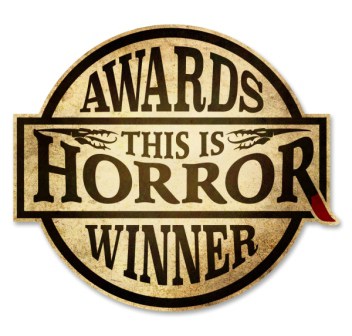
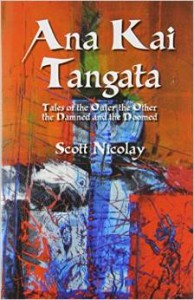
Leave a Reply